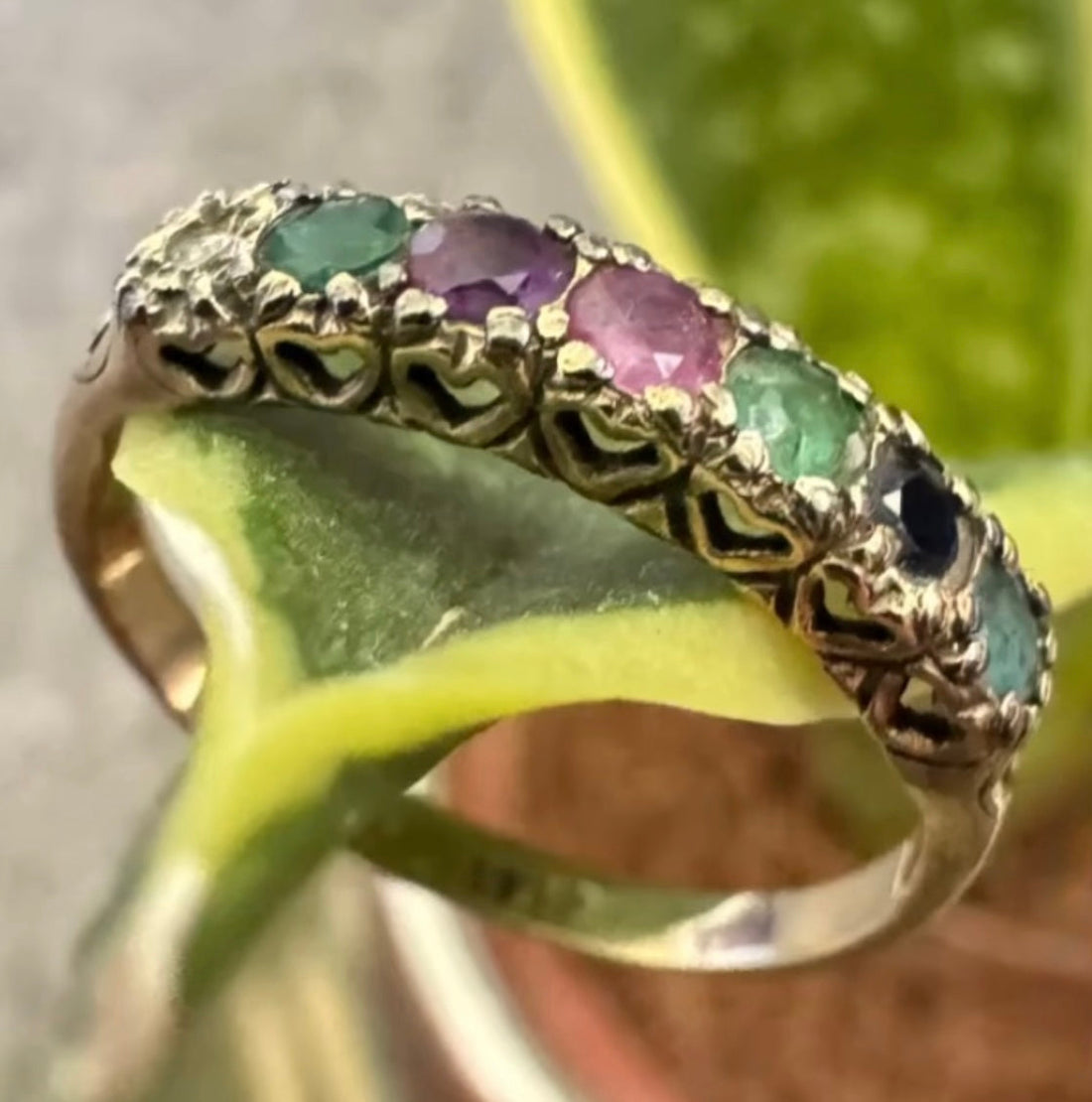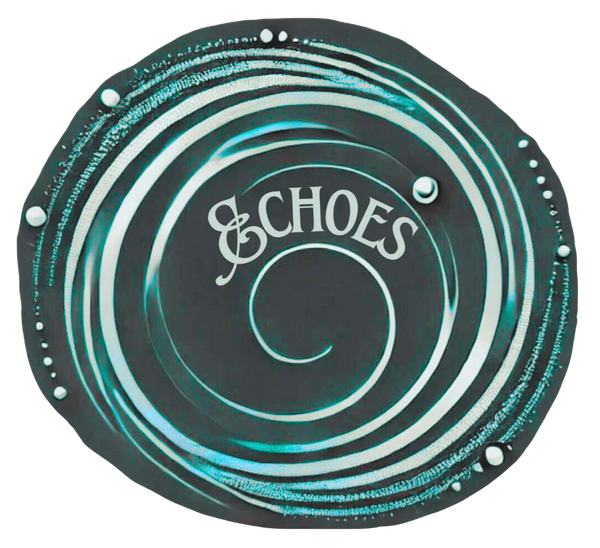
The secret language of love: a history of acrostic jewellery
When words failed, gemstones spoke. Acrostic jewellery, a romantic and symbolic form of adornment, became popular in Georgian and Victorian Britain as a discreet way to express love, affection, and sentiment. These exquisite pieces used gemstones to spell out secret messages, making them one of the most meaningful and intimate forms of antique jewellery.
In this article, we explore the history of acrostic jewellery, its origins, cultural significance, and why it continues to charm collectors and romantics today.
What is acrostic jewellery?
Acrostic jewellery uses the first letter of each gemstone to spell out a word or phrase. For example, a ring featuring a Diamond, Emerald, Amethyst, Ruby, Emerald, Sapphire, and Topaz would spell “DEAREST”. These messages were often hidden in plain sight - within rings, lockets, and brooches - allowing wearers to communicate emotions without saying a word.
This jewellery style was particularly popular in an age when open expressions of love were discouraged, offering a poetic and private way to send a message.
Georgian beginnings: the birth of acrostic jewellery
The origins of acrostic jewellery date back to the Georgian era (1714–1837), a time known for its refined elegance and emotional expression. French jeweller Jean-Baptiste Mellerio is often credited with introducing the idea of spelling out messages using gems in the late 18th century.
Words like “LOVE”, “REGARD” (Ruby, Emerald, Garnet, Amethyst, Ruby, Diamond), and “HOPE” were common. These early acrostic jewels were usually custom-made and exchanged between lovers, family members, or close friends.
The Victorian era: a golden age for sentimental jewellery
It was during the Victorian period (1837–1901) that acrostic jewellery truly flourished. Queen Victoria’s deep affection for Prince Albert and her lifelong love of sentimental jewellery had a profound influence on public taste.
Victorian jewellers began crafting more intricate designs, using a wide range of gemstones to spell out heartfelt words. These included:
-
ADORE
-
REGARD
-
DEAREST
-
THINK OF ME
-
ABSENT
Even mourning jewellery adopted the acrostic form, with sombre stones spelling out messages like “ALONE” or “RESPECT” to memorialise loved ones.
Hidden meanings in jewellery
What made acrostic jewellery so special was its ability to carry hidden meanings - a kind of emotional code known only to the giver and the wearer. This made each piece not just decorative, but deeply personal.
As a form of jewellery with meaning, it reflected the Victorian fascination with symbolism, secret messages, and coded language, much like the “language of flowers” that was also in vogue at the time.
The decline and revival of acrostic jewellery
By the early 20th century, acrostic jewellery faded from popularity as modernist and Art Deco designs took hold. The trend towards minimalism and abstraction left little room for the intricate symbolism of the past.
However, in recent decades there’s been a renewed interest in antique and vintage jewellery, with acrostic pieces once again capturing the hearts of collectors and designers. Contemporary jewellers have started to revisit the idea, creating modern acrostic jewellery that blends old-world charm with new-world aesthetics.
Why acrostic jewellery still matters today
In an age dominated by digital communication, acrostic jewellery offers a tactile and lasting way to express emotion. Whether antique or newly made, these pieces serve as timeless reminders of love, memory, and sentiment.
They are also valued as collectable antique jewellery, with genuine Georgian and Victorian examples often found in museums, auctions, or curated vintage collections.
Collecting acrostic jewellery
If you're interested in owning or gifting a piece of acrostic jewellery, consider the following:
-
Authenticity: Georgian and Victorian acrostic jewellery is rare and should come with provenance or appraisal.
-
Condition: Look for intact gemstone settings and original inscriptions.
-
Meaning: Choose a word or message that resonates personally - whether “LOVE”, “HOPE”, or a custom arrangement using modern gemstones.
Many antique jewellers in the UK specialise in sentimental and symbolic jewellery, offering unique pieces that combine historical craftsmanship with emotional depth.
Conclusion
The history of acrostic jewellery is one of romance, secrecy, and storytelling through gemstones. From its roots in Georgian innovation to its Victorian popularity and modern revival, this unique art form continues to enchant.
Whether you’re a history enthusiast, vintage collector, or simply seeking a jewellery piece with personal meaning, acrostic jewellery is a beautiful way to wear your heart on your sleeve.
